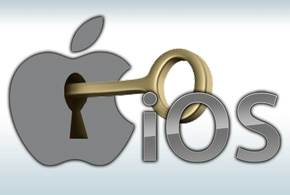Integration with partners such as Cisco and centrally managed restrictions make iOS 10 a more secure enterprise platform, say mobile-device management experts.
Apple made a big splash at its Worldwide Developers Conference in June with its focus on consumer privacy and its plug for a technology known as differential privacy.
But while the company’s promise to forgo creating consumer profiles is important, the announcement was a bit of a yawn for businesses.
Yet, other features of the new operating system, iOS 10, are focused on the needs of enterprises, bringing quite a few security improvements for businesses, according to security experts.
Apple has hardened both the mobile Safari browser and the core kernel of the operating system. In addition, iOS 10 has better integration with enterprise mobility management (EMM) software and includes a number of new features that can make wireless access more secure and prioritize business applications.
All of these changes make iOS a more serious operating system choice for enterprises, Ojas Rege, chief strategy officer for MobileIron, told eWEEK.
“Apple has been definitely been going down the path of better enterprise management, and focusing all the way down to security,” he said. “Every enterprise release gets deeper and deeper functionality.”
This path is not a new direction for the company.
In 2015, Apple introduced a host of enterprise-friendly features with its release of iOS 9. Six-digit passcodes for unlocking the phone offered users the ability to make shoulder surfing and brute-force guessing more difficult.
A revamped user interface for notifying users when they were installing an untrusted enterprise application gave employees better notification of potentially malicious installations. A variety of other changes made iOS 9 friendlier for mobile device management systems to provision and administer, Rege said.
“There are a lot of additional security controls that came out in 9.3,” he said. “Most of the security controls came out with the Spring release.”
With the September release of iOS 10, companies have even more capabilities.
1. Better integration with Enterprise Mobility Management
In the latest release, Apple added more enterprise features including integration with enterprise mobility management (EMM) systems to enforce and override activation locks on the devices and force the device to report its location if it is being actively managed.
In addition, Apple collaborated with Cisco Systems on Fast Lane, a technology that allows companies to prioritize data from specific business apps to speed communications on the network. The changes increased roaming speeds by a factor of eight and reduced browsing failures by 90 percent, according to Cisco.
“IT managers are empowered to simply ‘white list’ or select the apps they want to prioritize over the regular traffic with a simple configuration profile provisioned to the iOS device,” Jeff Reed, senior vice president of Cisco’s enterprise infrastructure and solutions group stated in a blog post about the new features. “When you mark apps for priority, you put the apps that are most critical for your business in the [f]ast lane.”
2. A less dangerous Safari
Previous versions of Safari allowed just-in-time compilation using a virtual memory region that allowed data writing, reading and execution—three functions that are dangerous when put together.







